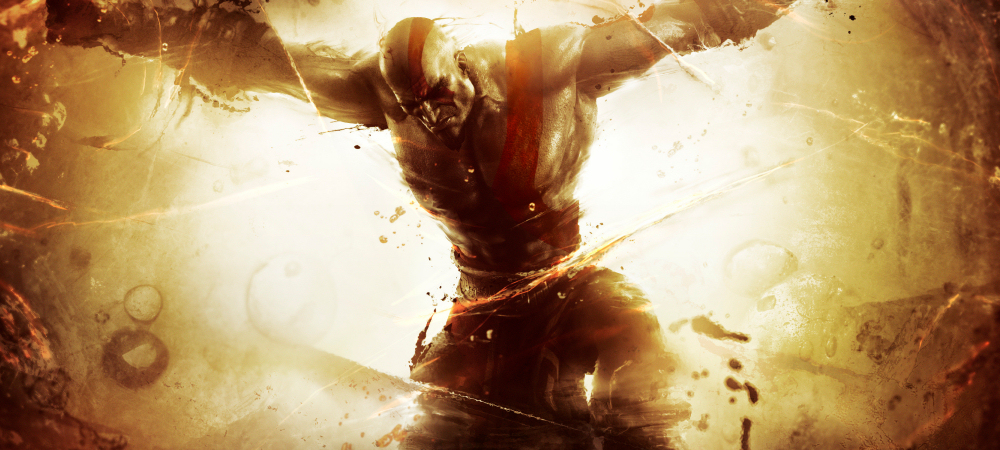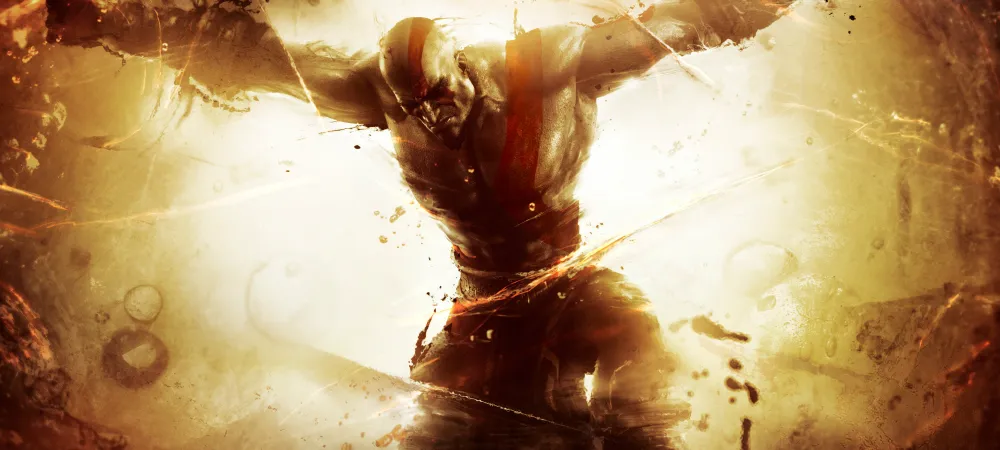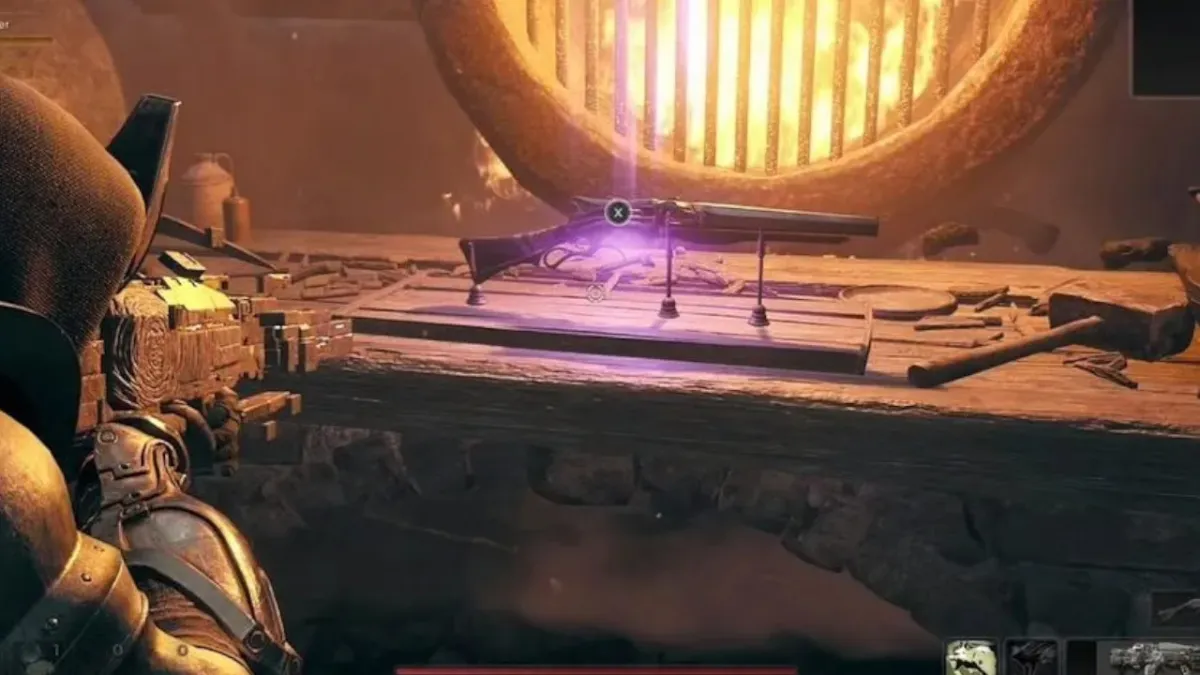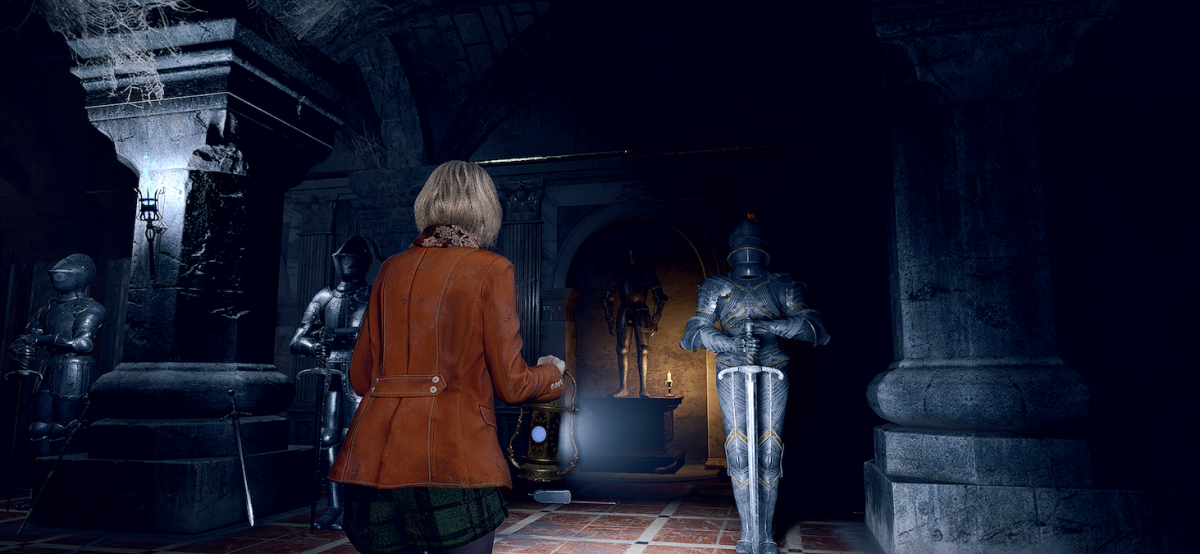Dis sh*t Kra … tos
How do you top something that was already considered over-the-top? Especially when this particular brand of over-the-top has become pretty familiar since in past eight years?
We all know that God of War‘s protagonist, Kratos, is an angry, super powerful killing machine that takes down even the biggest gods and monsters without even a hint of ever breaking his hardened scowl. So even more of that in yet another series game would be … well, it would be fine, really. More God of War is never a bad thing, right?
But how about some emotion for a change? How about a backstory? How about some motivation that goes beyond simple anger?
As I see it, the God of War franchise could have progressed in one of two ways. Either go bigger, or go deeper. Thankfully, God of War: Ascension does both.

God of War: Ascension (PlayStation 3)
Developer: Sony Santa Monica
Publisher: Sony Computer Entertainment
Release: March 12, 2013
MSRP: $59.99
This prequel story kicks off not long after Kratos killed his family, at a time where he is still dealing with that pain. He’s now out to cut ties with Ares for this terrible act he was tricked into, and Ares has three horrible sisters known as the Furies, Ascension‘s antagonists, out to punish him for trying to break his oath with the god. These Furies capture, confine, and continuously torture Kratos. This manages to spark and grow that head-ripping rage in Kratos we’ve all come to know and love.
Kratos is still in full-on badass territory in Ascension, but he’s not quite to the level we’re used to yet, with a slightly trimmer build and less in the way of scars. You’ll see him grow in both strength and rage over the course of the 8+ hour single-player campaign. It’s not that he is weak at the beginning — you’ll even witness the acquisition of his Blades of Chaos — it’s just that he ends up being so powerful by the end of the game that you can’t help but feel like a god.
Developer Sony Santa Monica did a wonderful job of weaving its story into gameplay, making Ascension feel more like an adventure than ever before. Story beats are smartly tied into Kratos’ journey, getting us away from the stage-boss-cinematic rotation of previous games. Some of the cinematic story bits tie directly into battles. I don’t want to spoil it for anyone, but Sony Santa Monica has pulled off one of the greatest bait-and-switch boss introductions ever.

A lot of the magic behind the God of War franchise is in how minimal work, like simple three-button combos, turns into brutally fantastic results on-screen. The hack-and-slash core mechanics of the series are still intact, though a new progression system adds elemental magic to the Blades of Chaos. Fire, ice, thunder, and soul magics are acquired at different points in the story, and they can be upgraded alongside the standard blades with red orbs. Fully upgraded, these elemental magic additions allow for some pretty explosive attacks — ones that will prove highly useful in the final chapters of the game. Overall, combat feels and looks a bit tighter than before. This improved fluidity goes nicely with some additional moves to Kratos’ arsenal.
World Weapons, like swords, clubs, spears, and shields, are found during gameplay, and can even be pulled from various enemies’ hands. Kratos can now take these and use them as his own, with the circle button being dedicated to their use. Each weapon has its own feel and purpose. The sword is fast and chains nicely into Blades of Chaos combos, while the heavy club is slow, though it can be charged up to hit harder. Shields can be used both defensively and offensively, and spears, while finite in supply, can be thrown to hit enemies from a distance. The addition of World Weapons alone makes for combat that feels much more varied than ever before. The game does a great job of placing these weapons in the best situations, so coming across one is always like finding the best toy on the playground.
The R1 button is now assigned to chain tethering, a supremely useful addition. A press of this button when faced toward a beat down enemy sporting a red halo initiates a zoomed in special kill — that’s always fun. Stuns, shield grabs, and other neat tricks are also assigned to this button/function. You’re free to incorporate this long-ranged grapple into your move set, allowing for in-air juggles that look and feel fantastic. I loved being able to hold an enemy, leashed with one chain, while attacking others, and then later pulling that enemy in as a sort of finale. It’s equally fun to take a tethered enemy and swing them around like a fleshy wrecking ball to take down other enemies.

There are also some new abilities that are tied to acquired items that let Kratos pull of some neat tricks. The most impressive of the bunch lets Kratos manipulate time for a specific object, letting him ruin or heal something to change its state. For example, a broken bridge can be made whole again. Another lets Kratos clone himself to be in two places at once. Both of these are used heavily in the game’s many puzzle sections, though both can also be used in battle.
The most welcome of Kratos’ new bag of tricks has nothing to do with combat at all. Getting around between battles has always been a bit of a drag for the franchise, but now Kratos finds himself doing anything but walking with new movement skills. Expect running and jumping, swinging from chains, kicking through walls, and many other kinds of explosive entries into rooms this time around. Also, Kratos now muscles over cliffs and through ruins as a climber, with a grip strength that would make Nathan Drake jealous. And why walk when you can slide? Kratos can scrape down walls, slide through ruins, and glide over ice and metal now. Ascension is packed with new modes of movement to break up the action and add some excitement to getting around.
Kratos’ brains are tested alongside his brawn in Ascension‘s many puzzle segments. While a couple of the less important puzzles hover dangerously near clunky territory, most are a nice challenge for your noggin, and a few are deviously constructed, forcing you to pull from every trick you’ve learned up to that point to solve them. The best of them add magical skills to the more standard stuff, like platforming and lever pulling.

Near the game’s ending, a string of large scale puzzles are brilliantly strung together in an overall challenge that has you fighting (literally) to figure out what goes where. After some truly taxing trials and several smaller rewarding aha! moments, it all comes together to form one of the most clever and impressive level-based puzzles I’ve ever seen. The reward for all of this work is massive in more ways than one.
For as difficult as some of the puzzles are, they’re nothing compared to some of the fighting challenges Ascension presents. Even with all of the changes to the God of War formula this game brings, locked-in-a-room, wave-based challenges are still the norm, and a few of them are so difficult that I wondered if I’d even finish the game.
It feels like Sony Santa Monica wanted to increase the challenge to match Kratos’ increased power and new arsenal, but there are a few times where it feels like they went a bit overboard. I can confidently state that I have never restarted from a checkpoint as many times as I did with God of War: Ascension. While I’ll admit to having pretty poor reflexes, and I know that I’m not the best action game player out there, I’m willing to bet that just about everyone will have a pretty hard time with one particular challenge stretch near the end of the game. If you don’t end up screaming at your television, I’ll be surprised.
When God of War was new, prompted button presses during cinematic action excited us. Now this mechanic is commonplace, and some might say outdated. I wouldn’t go as far as to say that Ascension relies on QTEs, nor would I say that they mar the experience, but they’re still part of the gameplay here, and those that were hoping for something more interactive this time around may be disappointed. They have added some new interactions on top of the standard face button attacks, though the interspersed instances of timed dodging with the left analog stick do not feel that much different. I have a feeling they were going for something more dynamic, but it really is still just inputting a command within a set time frame to proceed through a cinematic. As always, there’s a huge, flashy spectacle to go with these events, so they’re at least entertaining for your eyes and ears.

Sony Santa Monica seems to be showing off that they know the PS3 inside and out with Ascension. I swear I could almost feel tension emanating from my PS3 while playing this game, as it seems that this team cranked every knob to the maximum level to make Ascension as stunning as possible.
Huge cinematic set pieces and boss battles are a mainstay of the franchise, with predecessor God of War III having some of the most fantastic man vs. god clashes ever to grace a television screen. Somehow they’ve managed to top that with Ascension, with backdrops and beasts that seem to push the limits of what’s possible for the hardware. The environments are a new high for the franchise — some outstanding work has been done to give this game much more atmosphere than any of its predecessors. Throughout the game you’ll find brilliant use of scale, making Kratos as small as possible, and his enemies as big as possible, sometimes ridiculously so. The single-player campaign is a constant string of “wow” moments that I’m sure will stand out in your mind for years to come.
For maximum enjoyment, do not let anyone spoil the big moments God of War: Ascension for you. Find the biggest screen and the loudest sound system you can, crank it up, and dive in.
Even outside the fantastic boss battles Ascension never stops being impressive. Visually, the game usually hovers at merely beautiful, but it often ramps up to jaw-droppingly gorgeous, making for a game that could just as easily entertain hands-off spectators. From the glossy textures, slick animations, and ultra-realistic lighting, there’s a shine and polish that runs throughout the game that makes it a perfect send-off for the PS3.

There are a few scuffs that missed polish, though. One of the biggest of these are sound dropouts. The problem was apparent in our preview sessions, later in the released demo, and now in the final code. Sometimes, at critical moments, the music, background sound effects, or even a primary sound will not be heard. Seeing a massive gate door come crashing down without an accompanying sound effect was funny, but having key emotional moments marred by the music stopping momentarily was less enjoyable. This seemed to happen most during background loading or saving.
Other smaller bugs managed to crawl up from the depths, though they’re small gripes in an otherwise smooth experience. Every time Kratos slid down a ladder, the sliding sound effect would not stop as long as he remained on the ladder, even if he was done sliding. Sometimes enemies would spawn behind barriers, or get caught in item boxes, too. One graphical glitch had the entire stage and characters going black, with only lighting and particle effects showing. This was one of the prettiest looking game glitches I’ve ever witnessed.
My only real gripe on intended effects is on the screen shaking effect, which was taken overboard in places. Everything from the ground rumbling to large monster movement to weapon impact has the screen shaking. Sometimes the combined effect of the three ends up being dizzying, especially in segments where Kratos’ on-screen presence is small. Trying to keep track of Kratos and his enemies while everything shook was frustrating at times. I found myself having to pause and look away from the screen to get my bearings.
I feel bad griping about these issues as Ascension was such a thrilling ride overall. It’s like griping about squeaking wheels on one short segment of the fastest, craziest, most thrilling rollercoaster ever. And like a great coaster, you’ll want to get right back on for another ride.

While online multiplayer is a new concept for the franchise, I’m glad to say that God of War: Ascension‘s multiplayer isn’t some tacked on mess that was included to be able to put a bulletpoint on the box. Multiplayer in Ascension is surprisingly deep and refreshingly unique. I can’t wait until this game goes live so I can slash and bash some more faces.
You’ll start out with a muscular but otherwise blank slate of a warrior when first jumping into Ascension‘s multiplayer. Pledging your alliance to one of four gods — Zeus, Ares, Hades, or Poseidon — helps determine what your character will become, with each choice bringing its own strengths, weaknesses, and abilities.
Your choice also starts you at the bottom of a skill tree that you’ll climb as you fight in battles and gain experience. Experience is earned by winning, of course, but kill streaks and other challenges will also reward you with points. For example, Labors, which are “commandments from the gods,” give you very specific goals to knock out while fighting. They have you doing things like attacking a statue in a stage three times, with successful completion bringing both experience points and armor unlocks.

This experience will go not only into your character and his abilities, but also into his armor and weapons. Depending on your god alliance, working up this skill tree will gradually unlock more unique armor and items to use in future battles. Experience also goes into earning Relics, which are passive abilities that give you battle perks. For example, the Relic of Regeneration refills a player’s magic bar for each successful grapple or throw.
Combat is pulled straight from the single-player game, though there are smaller differences tied to each alliance, and perhaps a greater focus on defense, blocking, and parrying. All characters have light and strong attacks, all can block and launch, and all have grapple moves and finishers. Special item-specific attacks are tied to each of the three weapon types, and are used by holding down L1 and hitting either the light or strong attack buttons. These powerful moves have a cool down timer attached to them, as do alliance-specific “god item” special attacks.
All of the alliances seem to have access to the same core weapons — hammers, swords, and spears. But magics, strengths, weaknesses, specific resistances, and other stats are tied to your alliance.
The fighting is fast and flashy in Ascension‘s multiplayer, much like it is in the single-player campaign. Basically, if you’ve ever wondered what it would be like to throw a bunch of Kratos-types in one room to fight it out, this will serve as an answer. What’s great about the combat system is how approachable it is — anyone that has played any God of War game will be able to pick this up and start slashing.

I played against other press members for a few hours prior to launch, going through the various multiplayer modes in some increasingly competitive bouts. Early free-for-all matches, called Favor of the Gods, had every warrior out for himself, out to kill to see who would reach 8,000 favor points (you’re killing to sacrifice bodies to your chosen god) first. Those that slashed the fastest seemed to win early on, but I think that effective blocking and smart use of other abilities, like the powerful magic spells, won out eventually.
This evolved into a four-on-four team version of Favor of the Gods, with the first team to pull in 8,000 favor points winning. These matches were fast and crazy — imagine three or four players of one team frantically slashing away at one cornered opponent, with Ascension‘s fiery effects lighting up the screen. Some might say that the flashiness of the attacks makes the action a bit hard to follow, but my strategy of swinging the fastest until the air cleared seemed to serve me well.
Capture the Flag continued with the four-on-four teams, with the standard mode roles applying. It was a nice change of pace from the free-for-all matches, though the stages these matches played out in kept things interesting. Another mode called Trial of the Gods has players teaming up to go against waves of enemies together to see how long they can survive.
It seems Sony Santa Monica had some fun with the stage design for multiplayer. Each are packed with plenty of toys like spawning weapons and power-ups; portals for health and magic refills are scattered about as well. Add in teleporting ports, item chests, fire traps, catapults, fire bombs, flame turrets, and more, and you’ve got a crazy sort of funhouse feel that keeps the combat light and fun. It’s like being in a wild, attraction-packed theme park with bottomless toyboxes placed about. It’s all staged just so that no one could find themselves taking it too seriously. This made it so that I was more than happy to jump back in for another round every time.

In the rare instance that you have a chance to look around the stages, you’ll appreciate how much detail work was put into them. Aside from the varied obstacles they all present, there’s also some kind of secondary goal for each. Whether it be fire bombing people in the distance or poking out a massive cyclops’ eye, there’s never a dull moment.
Multiplayer is everywhere right now, but there aren’t many games that offer fast, accessible, melee-based fighting like Ascension does. Tacked on? Hardly. Ascension’s multiplayer is a daring move that pays off big. It’s a game in its own right, worth the price of admission on its on for online gamers looking for a new kind of challenge. Fans of games like Capcom’s Power Stone will be thrilled.

Ascension had challenges coming from every direction from early on. Some of the franchise’s core mechanics have grown a bit tired over the past years, which had gamers questioning the need for another title. Beyond this, some questioned the need for a prequel story. Most of all, the idea of a multiplayer addition was initially off-putting to vocal series fans. But, like Kratos, Sony Santa Monica ripped through every one of these challenges with their bare hands to bring us a game that is so fantastic that it should make anyone that ever questioned them feel bad for doing so.
God of War has never looked or played better than this. Kratos has never been as deep or interesting as this. They’ve set the bar so high that I have no idea how they’ll be able to follow this one up. Sony Santa Monica should be proud. Series fans should be proud.





